Wow, I haven’t gotten my ire up like this in a while!
Have you read the article in question yet by Harriet Jarlett “Green roofs may be a source of pollution” in Planet Earth Online of November 11, 2013 and its subsequent reprinting of November 12, 2013 on companion site Phys.org?
I have been back and forth with Dr. Andrew Speak, the researcher quoted, along with several of our industry experts in phytoremediation for their thoughts. Lots of interesting commentary. By the way, check out the comments on both sites above as well – they run the gamut from hitting the nail on the head to reading just plain funny. Andrew himself posted yesterday on Planet Earth Online that “the title of the article has sent people off on the wrong track.”
This past September, Andrew contributed the Guest Feature Article “Green Roofs and Air Pollution in the UK” which referenced his recent research, which at the time was still in press. After describing his work, he says both:
“The take home message from this work is that green roofs have a modest impact on urban air pollution compared to urban trees – but they DO have an impact.”
and
“My most recent study investigated the impacts on runoff water quality of a 43 year old green roof. High lead levels were observed which were possibly from historic atmospheric deposition of pollution in the days before the phasing-out of leaded petrol, which accumulated in the green roof soil.” ~ Dr. Andrew Speak, University of Manchester
While acknowledging the above statements, the “Green roofs may be a source of pollution” article concentrates on the results of Andrew’s work with these greenroofs which were constructed in 1970. We know that various air and water borne pollutants can be bound in soils (any soils) and later released at some point, that’s not the issue here. But to say across the board that “Green roofs could become a future source of water pollution” without also stating that any other soil receptacle also could be is.
So I had to write the editors of both websites and thought I’d share it with you:
“We publish Greenroofs.com, and take offense to the completely misleading and irresponsible title of the November 11, 2013 article by Harriet Jarlett “Green roofs may be a source of pollution” in Planet Earth Online and its subsequent reprinting of November 12, 2013 on Phys.org. Over simplification of a study misunderstood (or taken out of context at least) or grievous offense?
Greenroofs are not a source of pollution any more than a tree next to a highway (or motorway) would be or a river receiving runoff from a polluted field! They may be conveyors or harvesters of such but these examples do not create pollution. The source is elsewhere.
It would appear that Ms. Jarlett chose a titillating title taken out of context to gain attention to her article (which she certainly did!). I believe Dr. Speak’s study and subsequent comments are the result from his study of older greenroofs – 43 years old – where pollutants from vehicles had accumulated (after 4 decades) in these older vegetated roofs only, derived from materials (as in leaded petrol) that are no longer being produced.
I believe the pollution accumulation issue in soils in general is much broader than just on greenroofs alone, and needs to be further researched. Studies such as Speak’s and others are important to document the potential accumulation of pollutants on greenroofs – as in other receiving landscapes at grade – to establish countermeasures to manage them (specific plants, growing media additives, etc.).
In my opinion, Dr. Speak’s cautionary statement “We shouldn’t put green roofs next to busy motorways, or inner city motorways, basically anywhere where vehicle derived pollution could affect runoff in the future” is premature and unfortunately potentially harmful when other media outlets simply pick up on these inflammatory titles.
But to imply that greenroofs are a potential threat in “Green roofs may be a source of pollution” is simply as wrong as it is naïve.” ~ Linda S. Velazquez, ASLA, GRP, LEED AP, Greenroofs.com Publisher
Any thoughts?
~ Linda V.
 Greenroofs.comConnecting the Planet + Living Architecture
Greenroofs.comConnecting the Planet + Living Architecture
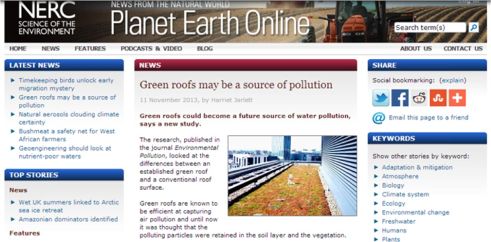

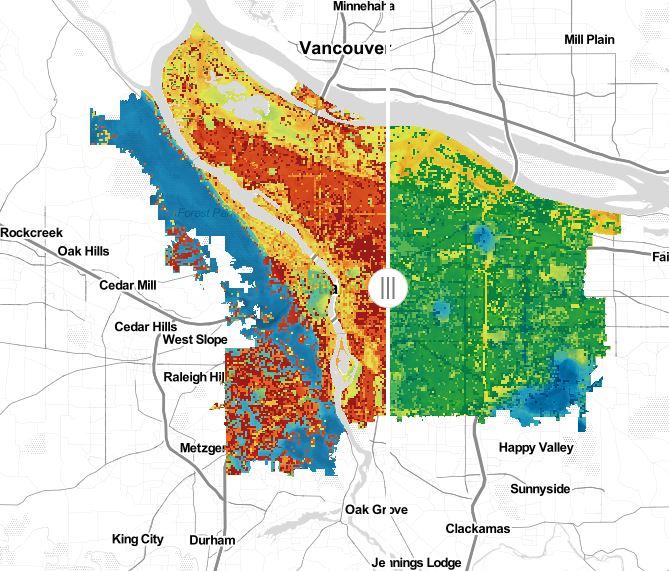
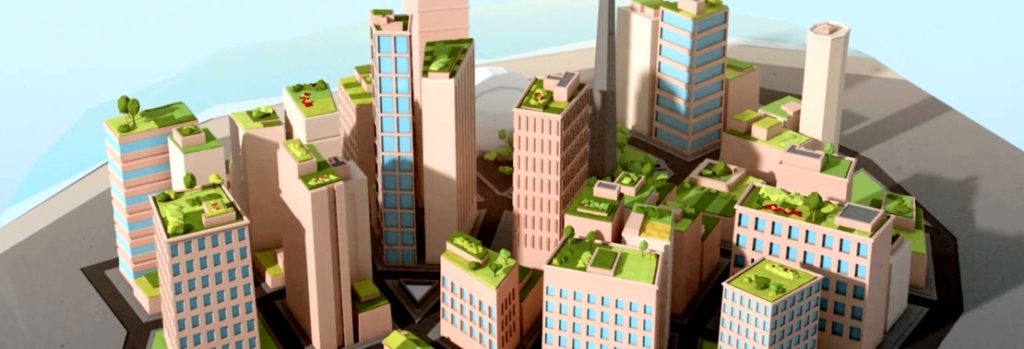
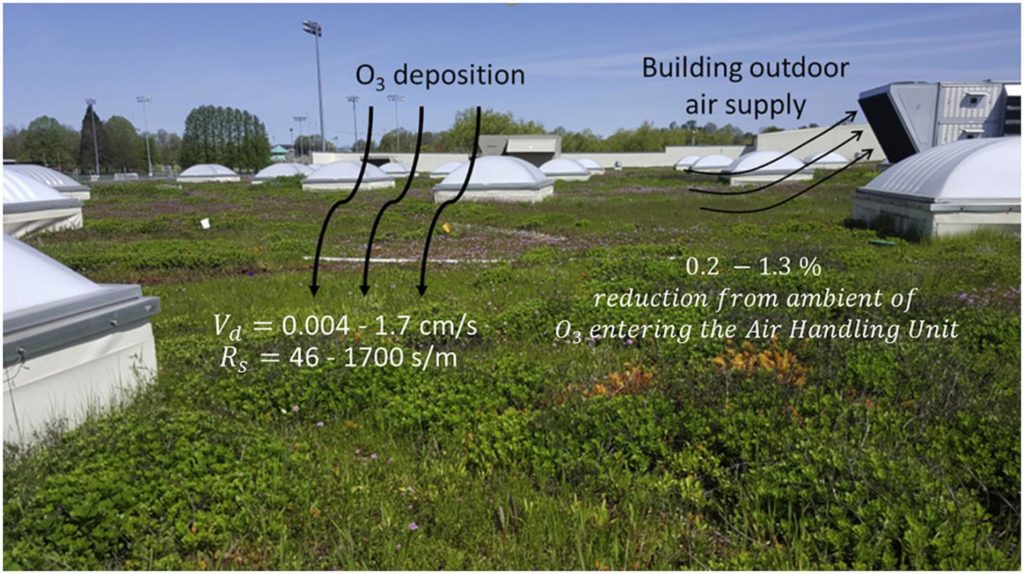
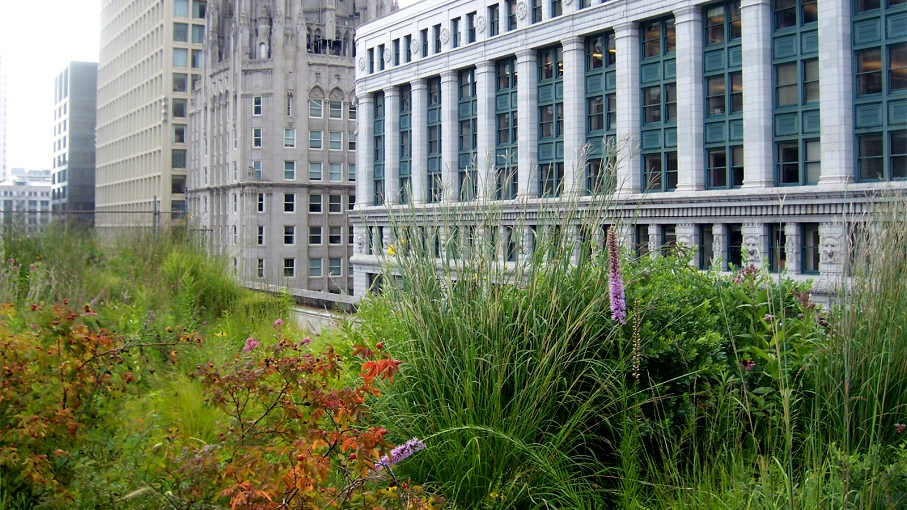
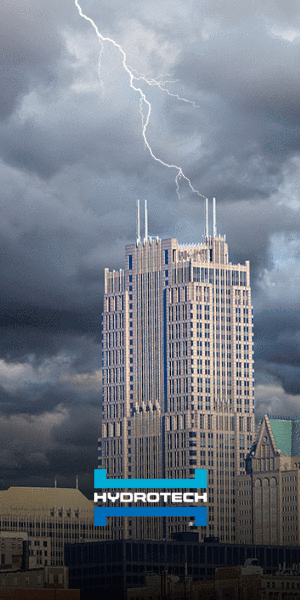



Jorg Breuning
Green Roofs are natural environments located on top of human made structures that took away a piece of nature in the first place.
All natural and living systems (including human bodies) take-up pollutants, ideally transform them into less harmful natural elements, partially accumulated them or release them back into nature. With the end of the lifespan of any living organism or when oversaturated with pollutants, they will be released eventually. Some natural elements (sun, wind, rain) might be able to break down pollutants but most likely transform them into other – sometimes more harmful – elements.
To reduce the release of pollutants it is crucial that the source of pollution is treated or as a temporary solution treatment for the polluted natural bodies. For human there is health care when affected by pollutants. Since all green roofs are connected to a sewer system, the run-off from green roofs is treated in a wastewater facility. For incomplete, misleading headline research without common sense there is the waste paper basket – how the British people would say. In America, experts say simply: trash.
sedum
the title of the article has been changed to “Pollution accumulated in green roof soils could contaminate water”. your response to this interesting research seems a little extreme — the take-home merely seems to be that green roofs have the potential to accumulate and then later release pollutants, and we should take note of that fact.
Linda Velazquez
Yes, they changed the title after I contacted them, after this post – see my follow up From “Green roofs may be a source of pollution” to “Pollution accumulated in green roof soils could contaminate water” to “Do Green Roofs Do more Harm than Good?” to “Green roofs may be a mixed blessing.”
I’m glad you agree with me that just like at grade, greenroof soils have the potential to accumulate and then later release pollutants. That’s my point – the title leaves out half of the story and standing alone, without referencing the specific research on 43 year-old greenroofs that had indeed accumulated pollutants no longer being manufactured, it appears that according to a new research study, all greenroofs now are potential water polluters.
Mary Vogel
Maybe green roofs need a Mycofilter around their edges! Working with Washington State
University, Fungi Perfecti just demonstrated that fungal filters are effective in removing one of the worst pollutants, e-coli, from stormwater. I was gratified to see that mycofilters can be developed that are not significantly impacted by excessive heat, cold, saturation, or dehydration.
http://fungi.com/pdf/articles/Fungi_Perfecti_Phase_I_Report.pdf